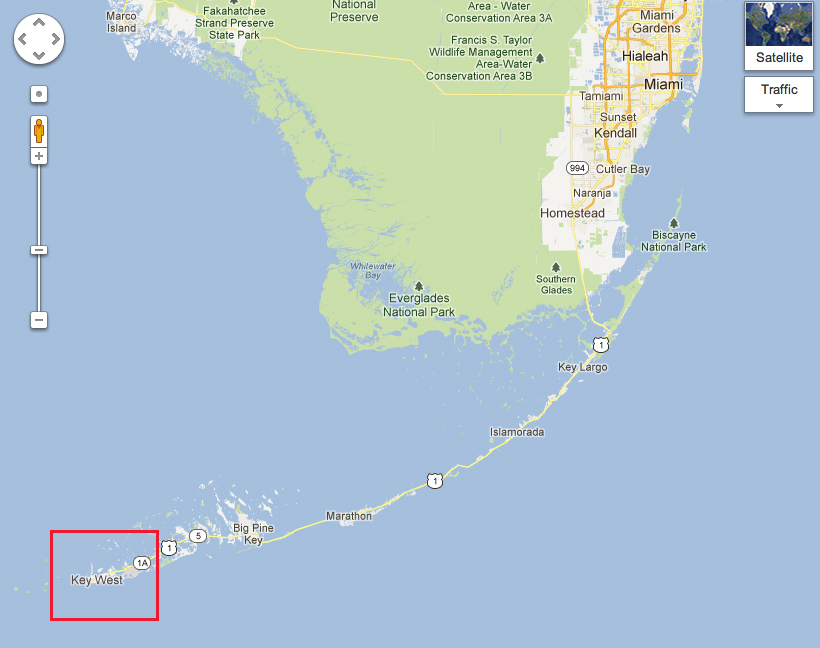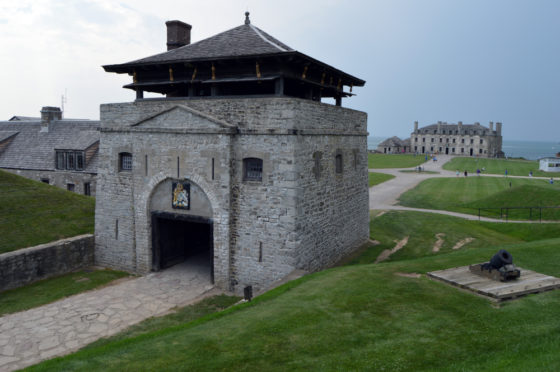
“Unlike the firebrand secessionists in other Confederate metropolises the citizens of the remote tropical island largely stayed out of the destructive four-year conflict.”
KEY WEST, Florida may be the southern-most point in the United States, but during the Civil War it it showed none of the South’s zeal for rebellion.
Unlike the firebrand secessionists in other Confederate metropolises like Charleston, Savannah or New Orleans, the citizens of the remote tropical island situated at the far southwestern end of the Florida Keys largely stayed out of the destructive four-year conflict.

In fact, according to this story in the area newspaper The Keys News, the laid back atmosphere that makes the island such a popular tourist destination today seemed to have been equally abundant in the 1860s. While there certainly was a core of pro-Confederate Southerners inhabiting the city, a large population of settlers from New England and the nearby Bahamas had little interest in leaving the Union, let along taking up arms for the Rebel cause. Residents of Key West even celebrated the implementation of the Emancipation Proclamation on Jan. 1, 1863.
What rebel sympathies did exist in the the region were squelched by the presence of a sizeable Union military base on the island, Fort Zachary Taylor.
According to the article, which was written by staff writer Adam Linhardt, the fortress was built in the 1840s on the site of an old War of 1812 battery. The outpost, as well as the nearby Fort Jefferson, situated on a coral reef 70 miles to the west, assisted in the Union blockade that slowly strangled the Confederacy. As many as 40 Yankee warships were stationed in Key West’s harbour. Over the course of the conflict, vessels from this squadron intercepted more than 200 blockade runners attempting to bring supplies into the Confederacy.
Yet despite the relative quiet on Key West, the threat of war was ever present. Throughout the conflict, the commander of the Union garrison expanded fortifications and prepared his troops for an inevitable rebel onslaught from mainland Florida. Such an invasion never materialized.
 The Conch Republic
The Conch Republic
Interestingly enough, while Key West remained part of the Union for the duration of the Civil War, an independence movement of sorts did spring up – albeit 120 years later. Amid a torrent of refugees fleeing economic hardship in Cuba in the early 1980s, the Florida highway patrol blockaded US-1, the main road that links the Keys with the mainland. Officers checked every car leaving the region for stowaway Cubans. It was an intolerable nuisance. Islanders, who call themselves Conchs (pronounced ‘conks’) after the first Bahamians who settled there in the 1830s, decided to declare independence as a form of protest in 1982. The secessionists dubbed their new homeland the Conch Republic and still celebrate their “independence” every April 23. Key West even claims to maintain its own army and navy made up of islanders and a local schooner. Their main duties involve playfully re-enacting the 1982 secession each year, dubbed the Great Sea Battle.

The Invasion
In September of 1995, the Keys unwittingly became part of a U.S. military exercise in which army reservists from a civic affairs battalion simulated the occupation of a foreign nation, using Key West as the target area. For some reason, local authorities were not informed in advance of the “invasion.” The PR-savvy mayor of Key West and self-proclaimed prime minister of the Conch Republic Dennis Wardlow ordered defenders of the island to hurl stale bread at the occupiers and douse them with hose water. The U.S. Army played along and formerly surrendered to Wardlow at the end of the two-day exercise.










1 thought on “Key West — The Confederate City that Seceded from the Civil War”